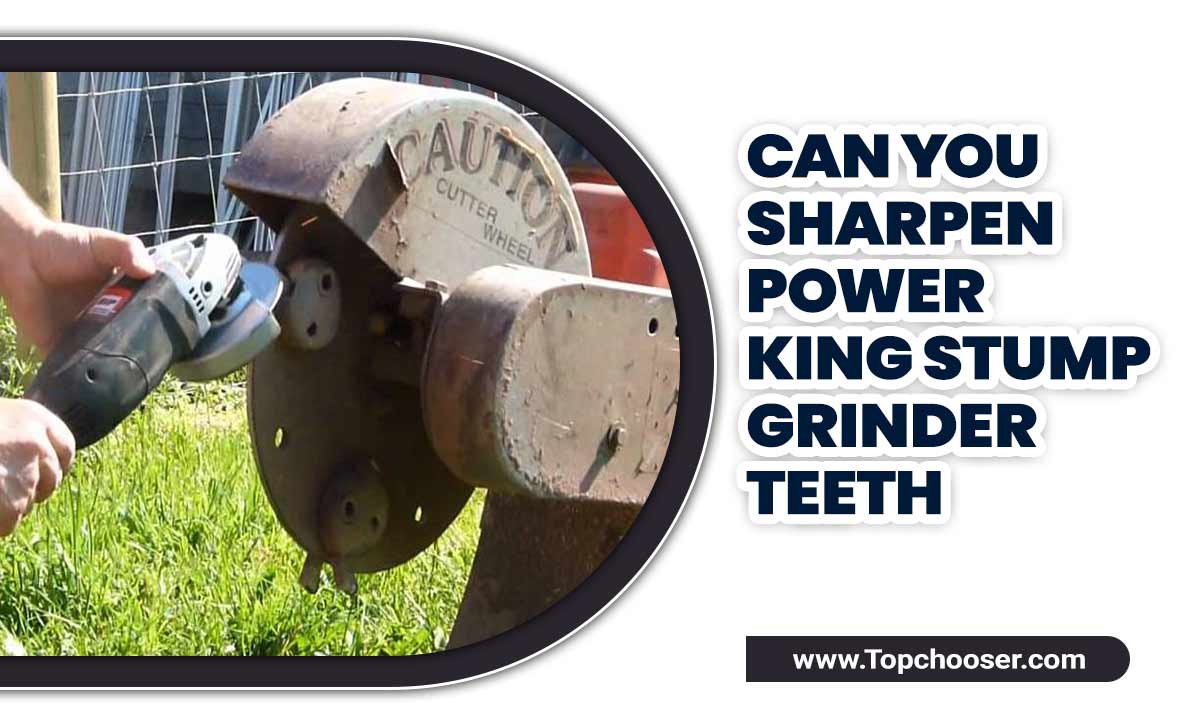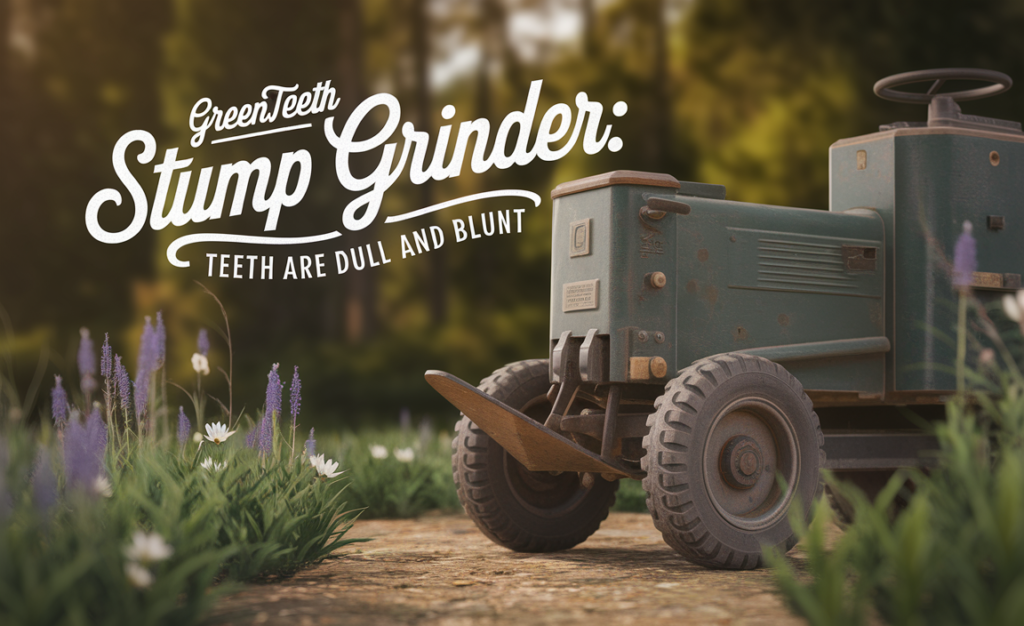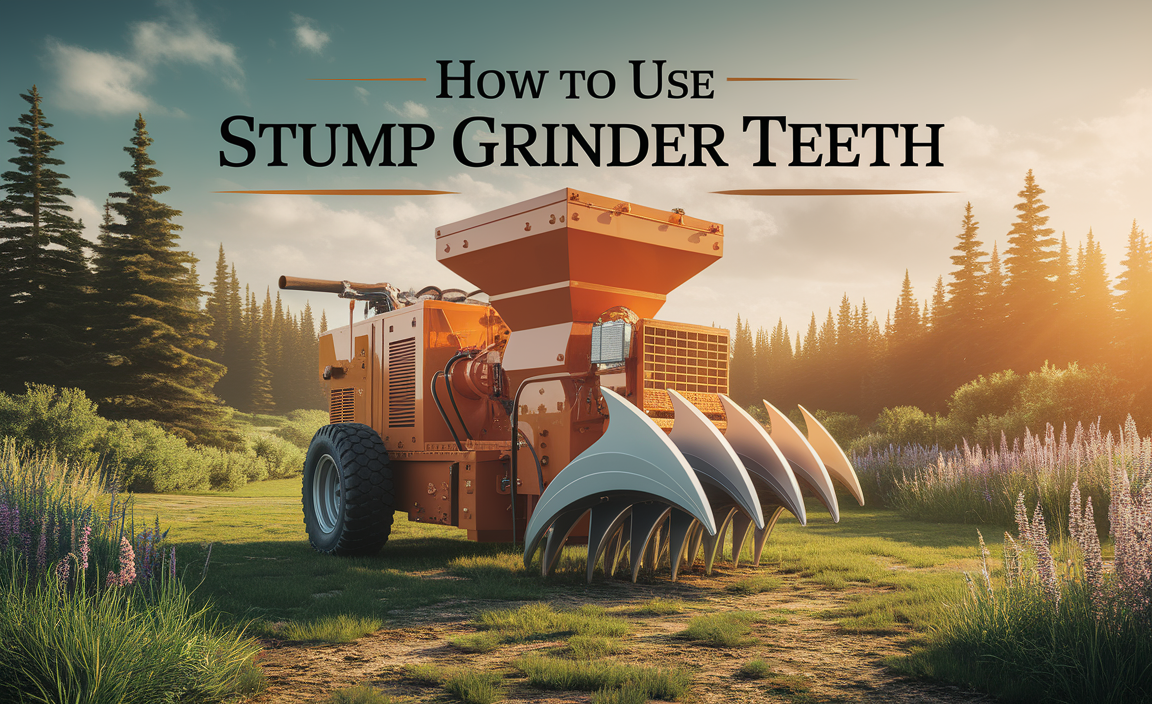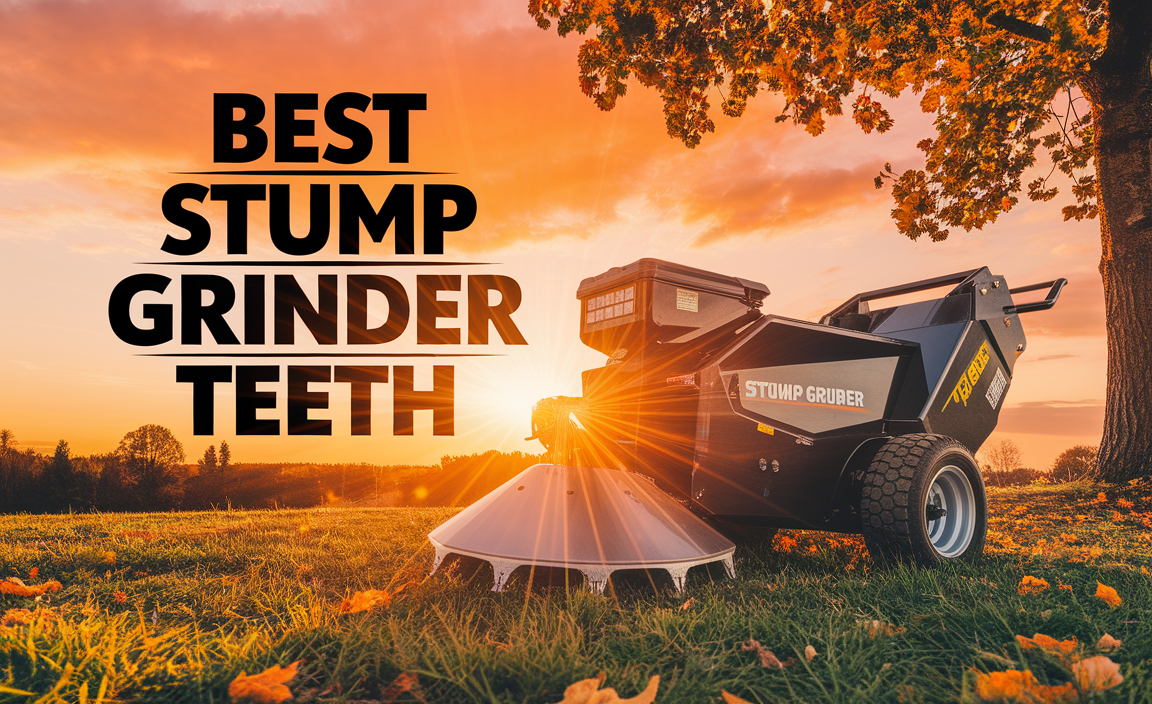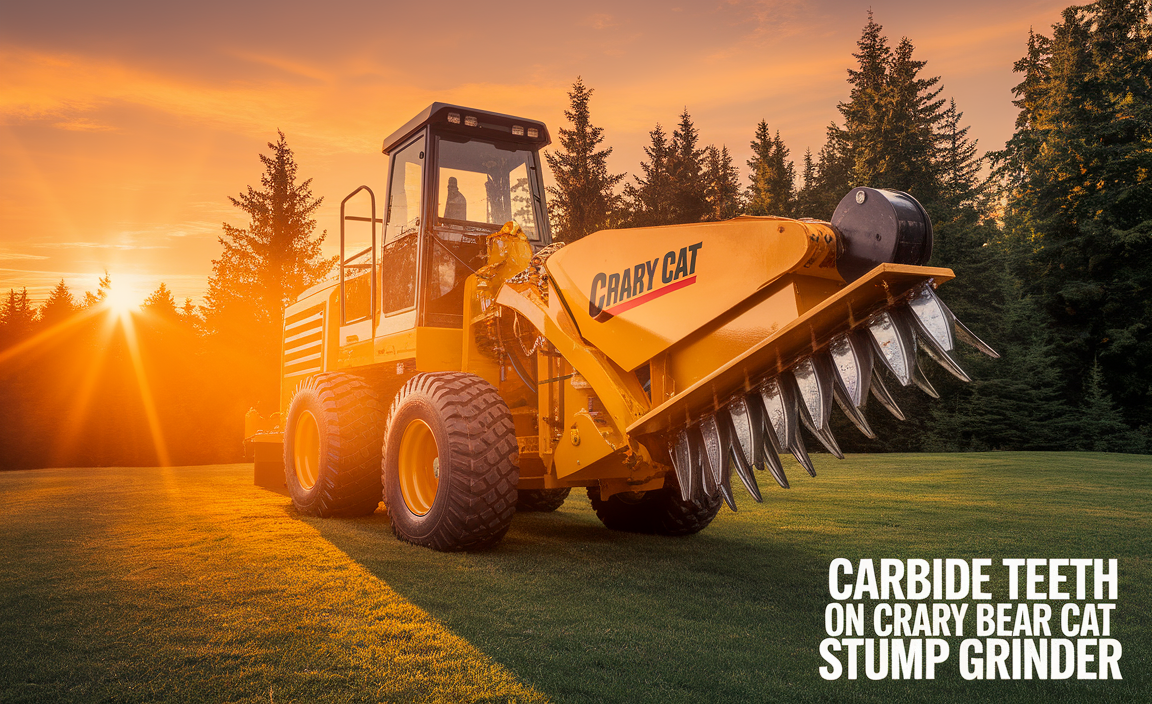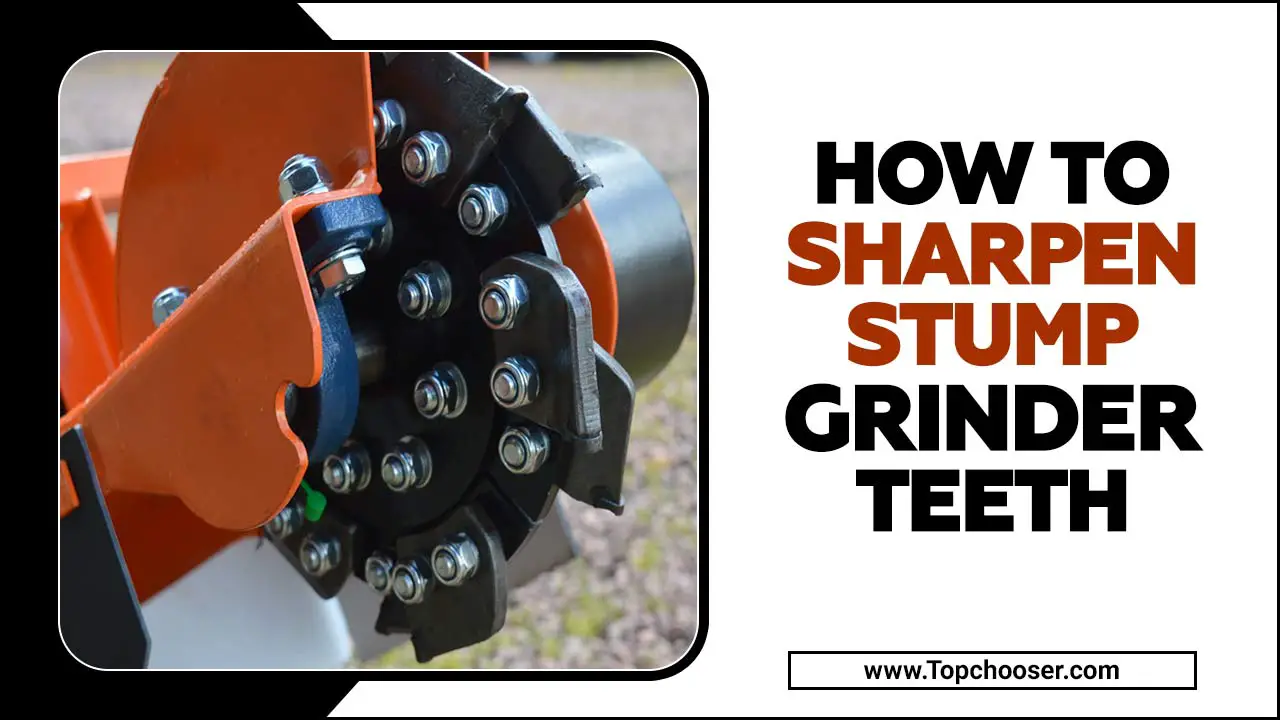Maintaining a stump grinder is essential for any landscaping or tree removal business. This powerful machinery has specific designs to grind down tree stumps, making it easier to clear the land for various purposes. However, teeth are a key component of this equipment that often goes overlooked. These small but mighty parts are responsible for the actual grinding process and can significantly impact the performance and longevity of the stump grinder. The question arises: how often do you change the teeth on a stump grinder?
Here, we will delve into the importance of teeth maintenance and replacement, the factors that determine their lifespan, and provide practical tips for prolonging the life of your stump grinder teeth.
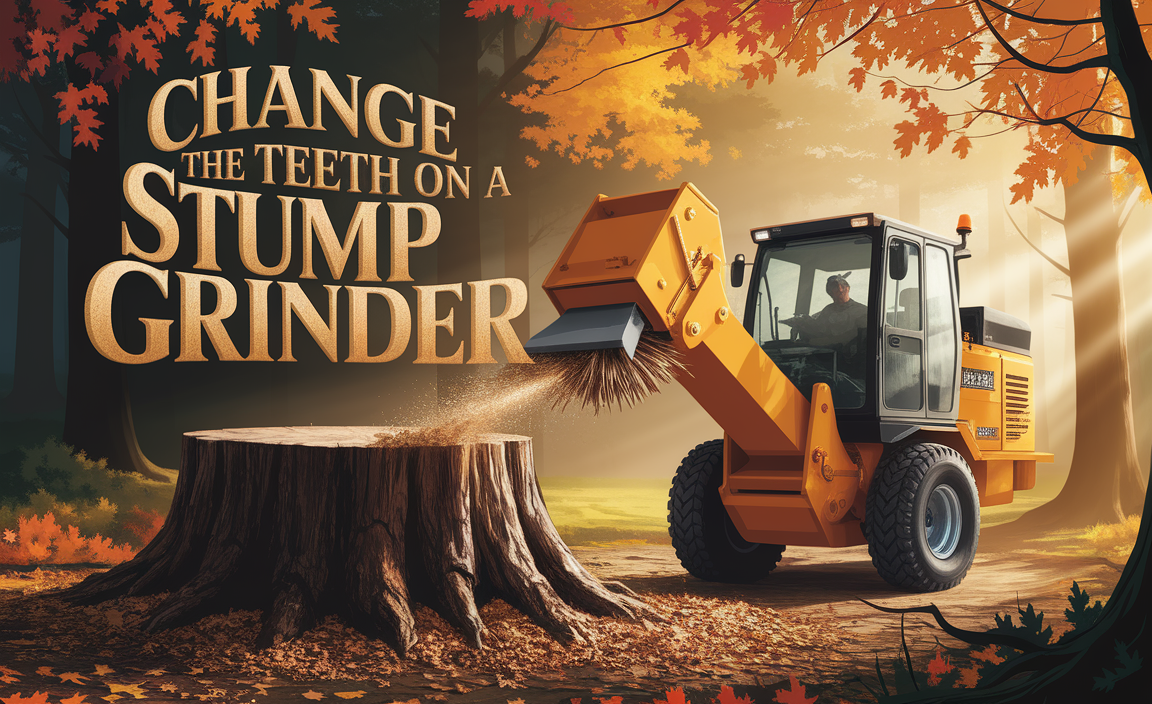
How often do you change the teeth on a stump grinder? Explained
The frequency of changing teeth on a stump grinder depends on several factors, such as the type of wood being ground, the size of the stumps, and the intensity of use. They change the teeth on a stump grinder after approximately 20-30 hours of operation or when they become dull and ineffective. Regular maintenance and teeth inspection are important to ensure optimal performance and longevity of the grinder. It is best to refer to the manufacturer’s guidelines and recommendations for specific instructions on changing the teeth of a stump grinder.
How To Change The Teeth On A Stump Grinder
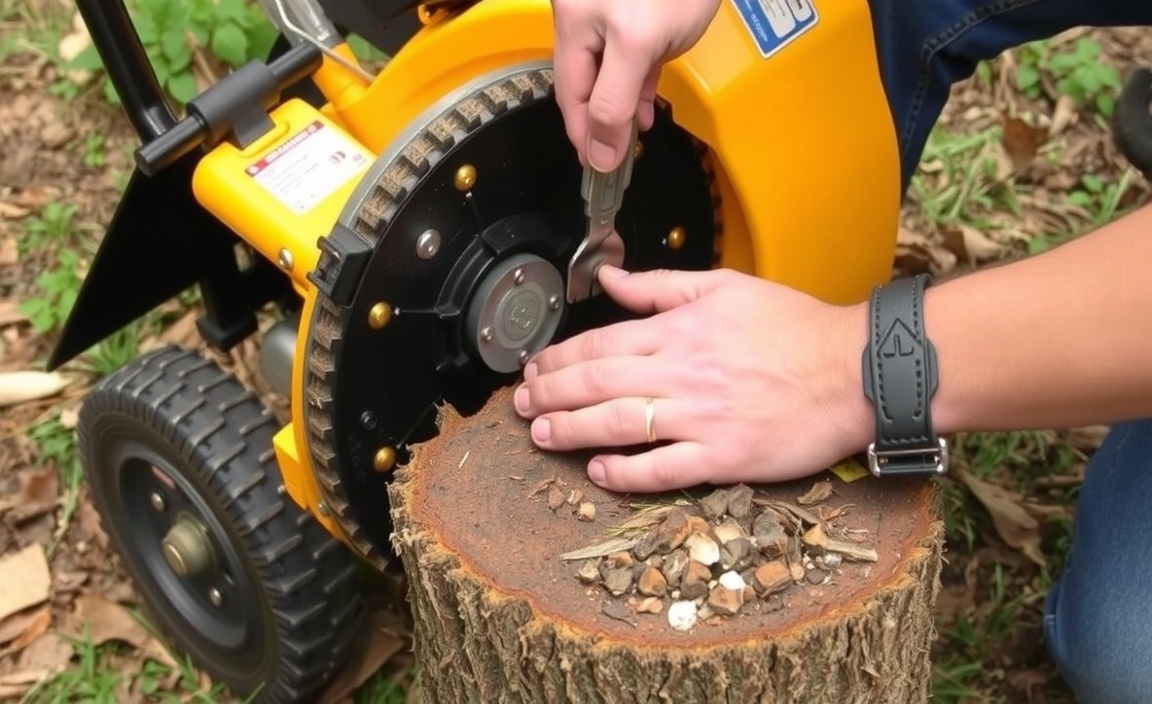
Changing the teeth on a stump grinder is a relatively simple process that can be done with a few basic tools. Here’s a step-by-step guide to help you change the teeth on your stump grinder:
1. Start by ensuring the grinder turns off and the engine is cool.
2. Locate the bolts or screws that hold the old teeth in place. Using a wrench or socket set, loosen and remove these bolts to release the old teeth.
3. Once the old teeth are removed, inspect them for any signs of damage or wear. If worn down or damaged, replacing them with new ones is recommended for optimal performance.
4. Take your new teeth and align them with the holes where the old teeth were removed. Make sure they fit securely and are facing in the correct direction.
5. Insert the bolts or screws back into place and tighten them using your wrench or socket set. Be careful not to over-tighten, as this can cause damage to both the teeth and the stump grinder itself.
6. Repeat this process for each tooth that needs to be replaced.
7. Once the new teeth are securely placed, start your stump grinder and test its functionality. Ensure that everything is working properly before using it on any stumps.
By following these steps, you can easily change the teeth on your stump grinder and ensure that it continues to operate efficiently for all your stump removal needs.
Factors Affecting Teeth Lifespan
The lifespan of teeth on a stump grinder can vary depending on several factors. Users’ frequency and intensity of use, the type of wood being ground, and the maintenance practices they follow all contribute to these factors. Generally, experts recommend checking the teeth for wear and tear after every use and replacing them if necessary. Here are some key factors that can affect the longevity of teeth:
- Material Quality: The type and quality of the material used to manufacture the teeth are crucial in their lifespan. High-quality teeth from durable materials like carbide or diamond tend to last longer than lower-quality options.
- Usage Intensity: The frequency and intensity of use can impact teeth’ lifespan. Stump grinders used for heavy-duty or prolonged operations may experience more wear and tear. Resulting in a shorter lifespan for the teeth.
- Maintenance and Care: Proper maintenance and care can significantly extend the lifespan of stump grinder teeth. Regular cleaning, sharpening, and inspection for damage or excessive wear can help identify issues early and prevent further damage.
- Operator Skill and Technique: The skill and technique of the operator also play a role in the lifespan of teeth.
Replace Stump Grinder Teeth
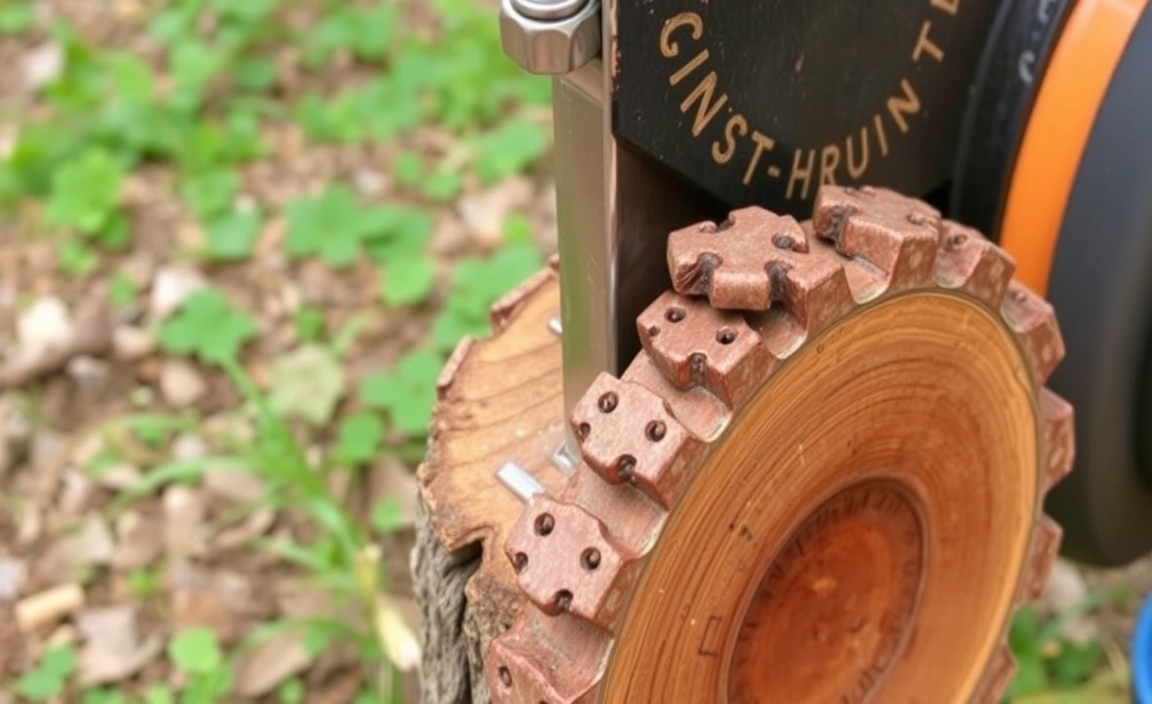
Several factors determine the frequency at which one needs to do it. Additionally, grinding the type of wood also affects the lifespan of the teeth. Harder wood species like oak or hickory can cause more wear and tear on the teeth compared to softer woods like pine or birch. To replace the teeth on a stump grinder, follow these steps:
- Safety first: Before starting any maintenance or replacement work, wear appropriate safety gear, including gloves, safety glasses, and hearing protection.
- Prepare the grinder: Ensure the stump grinder is turned off and securely placed on a stable surface. Disconnect the spark plug wire to prevent any accidental startup.
- Remove the old teeth: Use a wrench or socket set to remove the bolts securing the old teeth to the cutter wheel. Carefully take off the old teeth and set them aside for disposal.
- Clean the cutter wheel: Inspect the cutter wheel for any debris or buildup. Use a wire brush or compressed air to clean the wheel thoroughly, ensuring no obstructions may affect the new teeth’ performance.
- Install new teeth: Take the new stump grinder teeth and align them with the mounting holes on the cutter wheel. Insert the bolts through the holes and hand-tighten them.
Tips for Extending Teeth Lifespan
To extend the lifespan of your teeth on a stump grinder, it is important to assess their condition and replace them as needed regularly. The frequency of tooth replacement depends on various factors, such as the type and intensity of grinding work, the type of wood used, and the overall maintenance of the stump grinder. It is important to follow these tips:
- Brush teeth twice a day with fluoride toothpaste
- Floss daily to remove plaque and debris between teeth
- Limit consumption of sugary and acidic foods and drinks
- Visit the dentist for regular check-ups and cleanings
- Avoid smoking and excessive alcohol consumption
Maintaining and Sharpening Stump Grinder Teeth
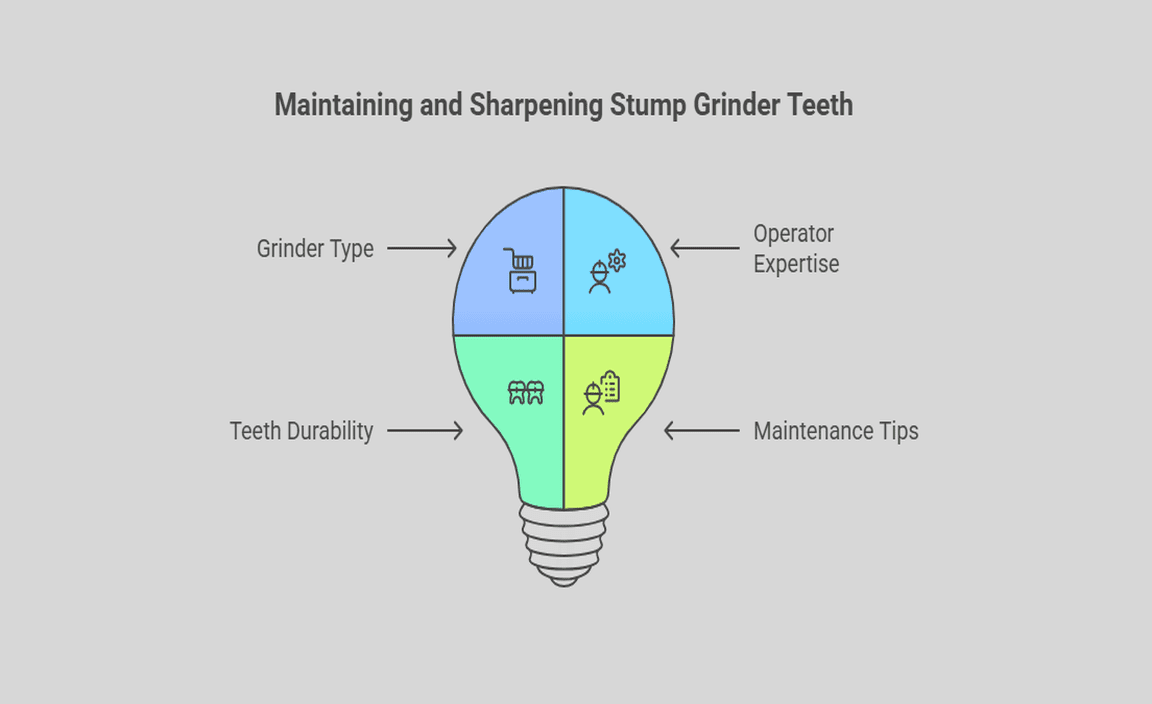
The frequency with which teeth on a stump grinder are changed depends on various factors, including the type of grinder and the operator’s expertise. Rayco teeth are popular for their durability due to their concave design, which reduces premature wear. Here are some important tips and information on how to properly maintain and sharpen stump grinder teeth:
- Regularly inspect and clean stump grinder teeth
- Sharpen teeth using a specialized grinder or file
- Maintain proper tooth angle and sharpness for efficient grinding
- Replace worn or damaged teeth promptly
- Follow manufacturer guidelines for maintenance and sharpening
Selecting the Right Teeth for Your Stump Grinder
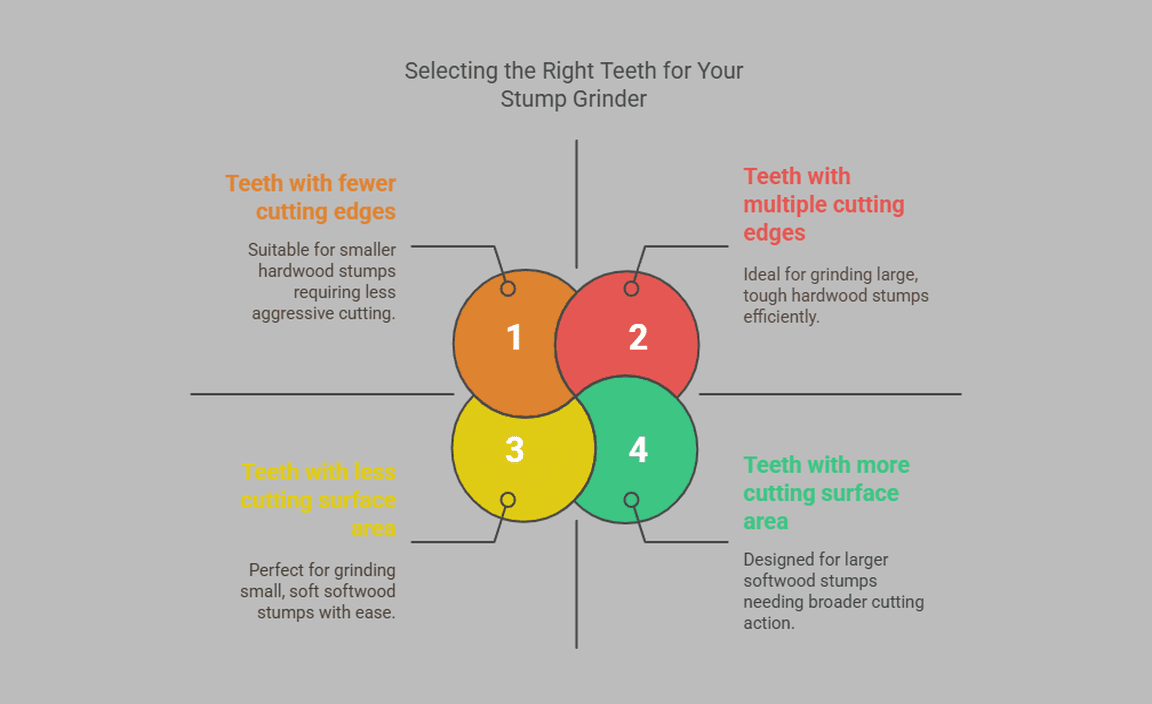
Choosing the correct teeth for your stump grinder is crucial for efficient and effective grinding. The frequency at which you change the teeth on a stump grinder depends on various factors, such as the type of wood being ground, the size of the stumps, and the conditions in which the machine is cleft. Here are some tips to help you select the right teeth:
- Consider the stump size: Different stump grinders have specific designs for various sizes of stumps. Smaller stumps require teeth with less cutting surface area, while larger stumps need teeth with more. Assess the average size of stumps you’ll be grinding to determine the appropriate tooth size.
- Determine the stump condition: Stumps can be soft, hard, or mixed. Softwood stumps are easier to grind and require teeth with fewer cutting edges. On the other hand, hardwood stumps are more challenging to grind and necessitate teeth with multiple cutting edges. If you frequently encounter softwood and hardwood stumps, consider using teeth with a combination of cutting edges.
- Assess the terrain: The type of terrain you’ll be working on can impact the performance of your stump grinder teeth.
Conclusion
The frequency of changing teeth on a stump grinder depends on various factors, such as the type of teeth, the frequency of usage, and the type of wood being ground. It is important to regularly inspect the teeth and replace them when necessary to maintain the efficiency and effectiveness of the machine. As a professional, it is crucial to prioritize routine maintenance and proper equipment handling to ensure safe and successful stump grinding operations. By understanding the factors that affect tooth wear and implementing proactive maintenance, you can prolong the lifespan of your stump grinder and achieve optimal results.
FAQ
How long do stump grinder teeth last?
The lifespan of stump grinder teeth typically ranges from 20 to 40 hours of use, but this can vary depending on the hardness of the wood being ground, maintenance practices, and the quality of the teeth themselves.
How do you replace a stump grinder tooth?
First, locate the bolts holding the tooth in place to replace a stump grinder tooth. Use a wrench to loosen and remove the bolts. Take out the old tooth and clean the area.
What is the best tooth for stump grinding?
A carbide tooth with a sharp edge is typically considered the best for stump grinding due to its durability and precision in cutting through tough wood material.
How do you sharpen Dr stump grinder teeth?
To sharpen the teeth of a DR stump grinder, you can use a round and flat file to sharpen each tooth individually. Start by cleaning the teeth and removing any debris.
How much oil does Dr stump grinder hold?
The oil capacity of a typical Dr. stump grinder can vary depending on the specific model and engine size, but most Dr. stump grinders have an oil capacity of around 1.5-2 quarts.
Resource:
safe machinery maintenance practices: https://www.osha.gov/machine-guarding/maintenance
power tool maintenance advice: https://www.bobvila.com/articles/power-tool-maintenance/
how to sharpen cutting tools: https://www.familyhandyman.com/project/how-to-sharpen-tools/
selecting durable landscaping equipment: https://extension.missouri.edu/publications/g1954

I am passionate about home engineering. I specialize in designing, installing, and maintaining heating, ventilation, and air conditioning systems. My goal is to help people stay comfortable in their homes all year long.

